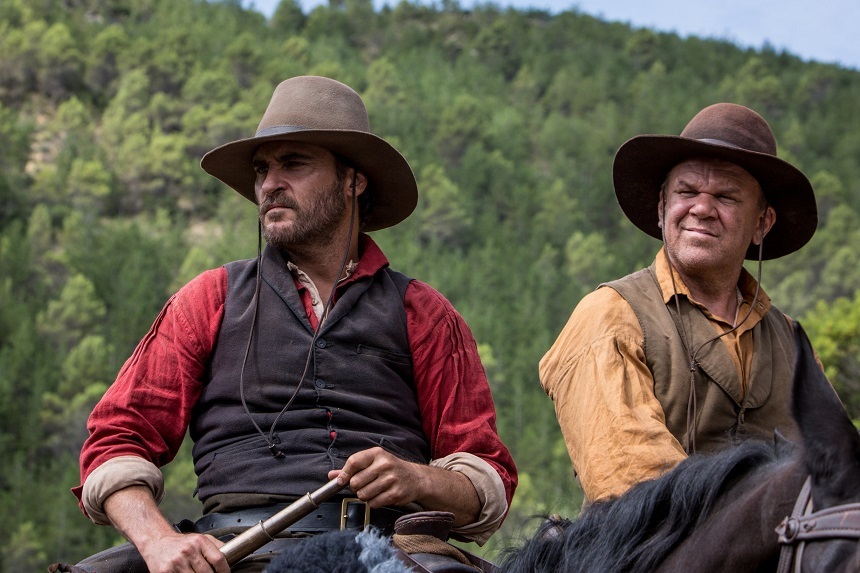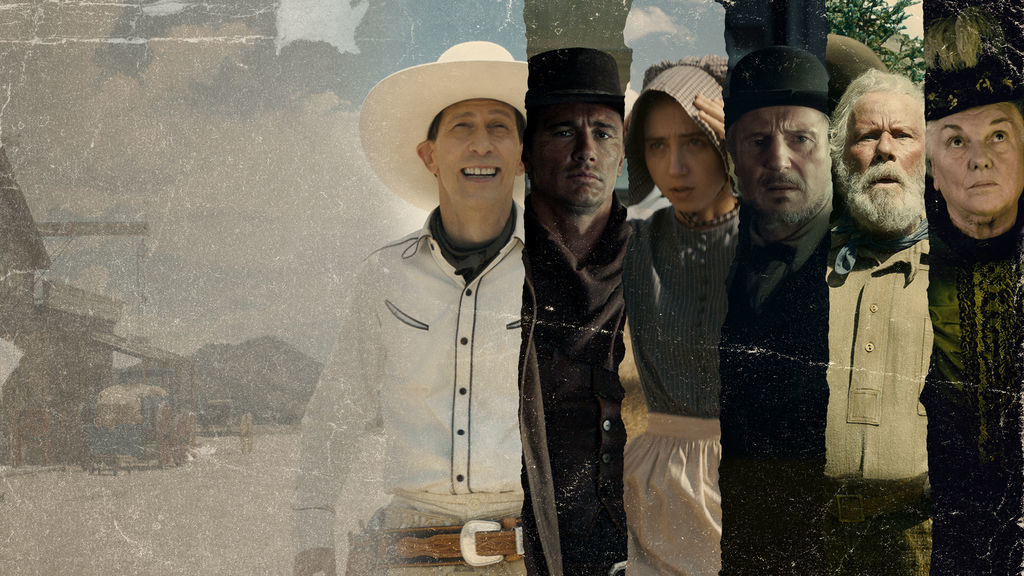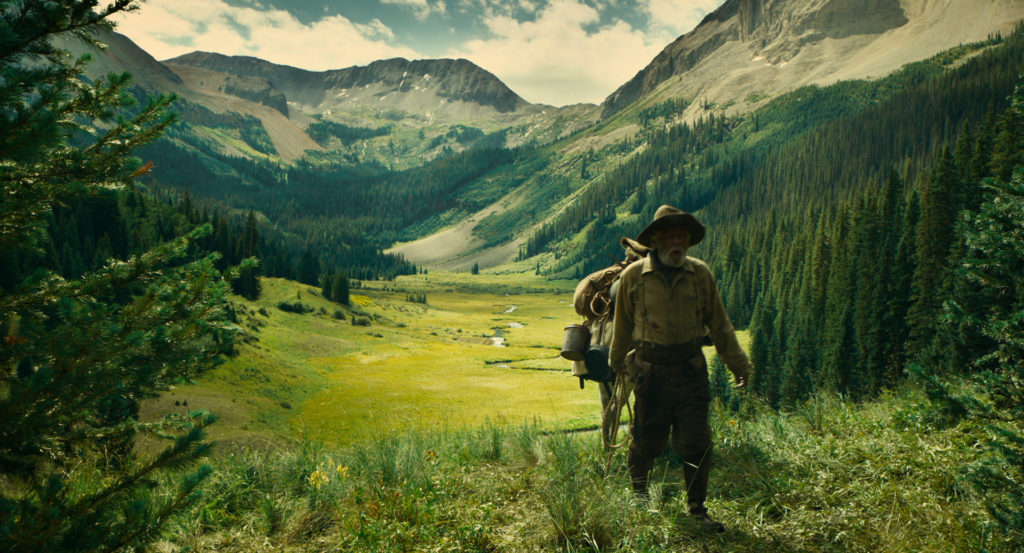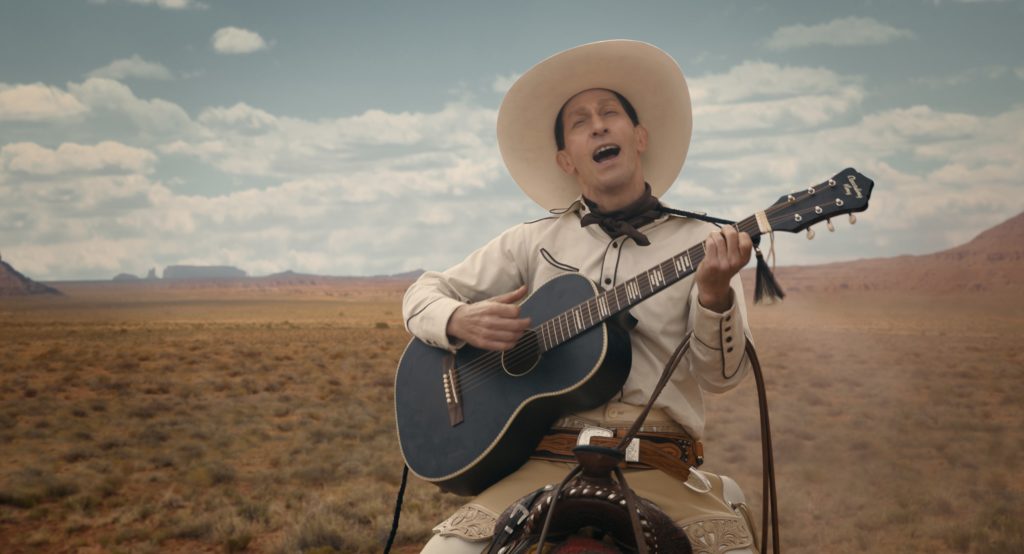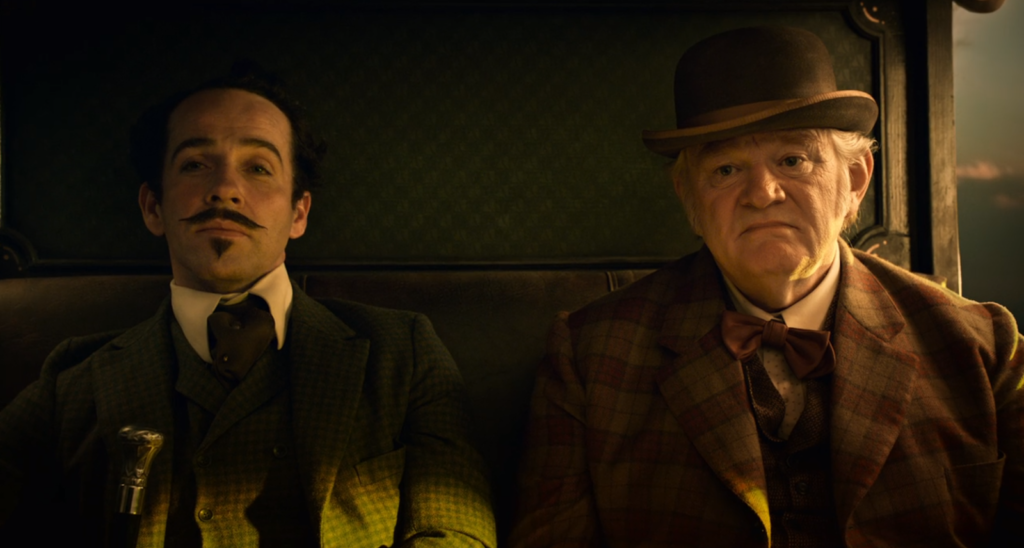Western Battle: The Sisters Brothers vs. The Ballad of Buster Scruggs
A few years ago BlogProFilm has already talked about western, its history, rises and falls, classics and innovative approaches. Since then the western has expanded its film vault and does not tend to slow down. Now the genre proves to be developing sustainably, and will not give up its podium without a fight. However, quantity does not always mean quality, and all-star cast not always guarantee the success. To substantiate the words with some proof let me compare two top-expected westerns screened in late 2018: The Sisters Brothers and The Ballad of Buster Scruggs. Prepare your SAA`s and sharpen your knives, gents, that`s no rap-battle, this is film critics in motion.
So, two films, two westerns. Both of them are, let`s say, classic in terms of filmmaking: no alien elements like plotline antics, feminization of the main characters or distortion of obvious historical facts. Both got brilliant cast. But still, while the one looks tangled and pale, the other, being twice longer by on-screen time, can be easily consumed in one shot. I will assume a sheriff`s duties in this duel and will try to be unbiased while considering the case with no spoilers.
The Sisters Brothers, having under their belt the quaint name, the brutal tandem of Joaquin Phoenix who is about to shake the screen with his Joker performance and John C. Reilly and a genuine and under-hyped story, have managed to dig such a cinematic treasure deep into the mass grave of not much masterpieces. Moreover, its filmmakers did the unthinkable and established a precedent that the western could go without action at all. It is hard to believe, but everything on screen – fights, chases, gold rush, literally everything seem static, as if made of concrete. It is a suicide for a western. And there might be a long shot to cast Jake Gyllenhaal and Riz Ahmed, these two guys are definitely not of the Wild West type. While watching I have noticed the weak photography time after time: even talented actors can be set to zero by a milk-and-water camera. The same can be said about naturalism – the filmmakers might have forgotten that sometimes it does not secure realism and common sense at all.
Lack of atmosphere. Perhaps this very unflattering definition suits The Sisters Brothers the most. The movie seems longer than it actually is, sometimes it even causes yawning. Maybe I am too severe in the judgement of the French filmmaking team lead by director Jacques Audiard who is widely known and acclaimed as a screenwriter for Le Professionnel starring Jean-Paul Belmondo back in 1981. Audiard has never worked both with the western and the English-language material before, this never stopped him from gaining the Silver Lion as the best director at the Venice International Film Festival for The Sisters Brothers. As you can see, even the highest cinematic assessments can not affect my perception of this film, and, unfortunately, this is quite an impartial opinion, I am just trying to relate the feelings of a viewer, not a reviewer. Maybe there is something unscreenable in the story behind the film (the screenplay was based on the book by modern Canadian writer Patrick DeWitt), or maybe in the soundtrack – pardonne-moi monsieur Alexandre Desplat, but this soundtrack is more suitable for any claustrophobic office thriller rather than for a western. Landascape shooting were made in Romania and Spain (while it is California in the story), and the one should be truly inspired and involved into the western itself, not in the result of the filmmaking, to make a 100% western outside of the U.S. Can`t help reminding of the brilliant example from the not far western history: Slow West by John Maclean, wholely filmed in New Zealand. The film has rightly took its place in the 75 greatest western movies rating by Rotten Tomatoes, leaving behind some John Wayne`s classics like True Grit or Clint Eastwood`s Pale Rider or Robert Redford`s Butch Cassidy & The Sundance Kid and Jeremiah Johnson. I just feel a bit sad about its 29th place – it definitely deserves a higher ranking, believe me.
What a vivid and involving contrast is the other brothers` masterpiece, comparing to The Sisters Brothers! Not rookies in western (they remade True Grit in 2010), The Ballad of Buster Scruggs directors Ethan and Joel Coen this time co-worked with the western literature classics: Jack London and Stuart Edward White, probably adding some campfire stories that their own grandpas traded years ago. The motto How the West Was Won suits each of six novels that form the film. They are not connected by the plotline or any recurring characters, but all six of them reflect different faces of the newly shaping state: greedy, aggressive, mean, kind, adventurous, desperate, bold, forlorn, naïve, cynical, generous, mad, noble – whatever, but alive, emotional and moving. These are true people, not puppets, their passion and deeds did won the West by bravery or foolishness.
The whole film breaths with the air of the West. These are not pattern-type stories of cowboys, Indians, outlaws, bounty hunters and gold miners – all six cinematic novels save room for dynamics, psychological strain, humor (dark or brighter), mystique and philosophy of life. And, which is more important, for the authentic style of the legendary era. The film is embraced with the bookish atmosphere, I mean, watching it is like reading a good book. Moreover, titles and credits are creatively made like a virtual book with illustrations that revive into the action, making you dive into your own imagination and the world the directors wanted you to see.
Once again Slow West comes to mind with its campfire episode, when one of the Payne`s men trades ridiculous but lifelike western stories. The same principle of the unbelievable truth laid in the basement of The Ballad of Buster Scruggs, that is why it is interesting, touching and extremely involving. There is no objections even against the digital photography here, it was the first Coens` film made totally with digital cameras. Colors still look realistic, without exaggerations, each scene is filmed like the best turns worse than better. Shooting locations were found in Nebraska, New Mexico and Colorado, just imagine these wonderful and raw landscapes, ready to remind you how the West was won. Local folks were cast for extras instead of Hollywood back-benchers.
Music and sounds that create presence effect were supervised by Craig Berkey, who did the sound editing for Darkest Hour. Costume designer`s work is beyond appraise as well, there were well-deserved nominations for BAFTA and Oscar. The characters themselves and the situations they are tangled or forced into are so unique and unusual that smoothly rhymes to real life: okay, there are pretty much of typical and standard nothing around us, but the things that matters, something that you will surely remember are always in the league of their own and a bit out to lunch. Life is generous for something less expected, so does The Ballad of Buster Scruggs. No predictability, no longueur, just pure unfiltered western.
The Ballad of Buster Scruggs is full of music, not just that very ballad that were written for the film exclusively and got an Oscar – 2019 nomination as Best Original Song: When a Cowboy Trades His Spurs for Wings. All other tracks come from folk music or western classics like Cool Water by Bob Nolan. In fact the song itself has no connection with the Wild West times, it was written in 1936 for music show performing, but then became popular enough to appear in numerous films, be covered by famous country singers, and to occupy the 3rd place in Top-100 Western Song Classics. Among the crowds of performers who covered it I admire Marty Robbins`s version the most, and the lounge-blues expromt by Ben Mendelsohn in Lost River. In The Ballad of Buster Scruggs the song is performed by Tim Blake Nelson as Buster Scruggs, the Texas gunslinger who lived and died with music.
The Ballad sparks with Irish folk, eternally tied with the Wild West by the waves of Irish immigration. And the most beautiful thing is that it is performed by true Irish lads: Liam Neeson and Brendan Gleeson. The first appears as a desperate mean and full-time drunk impresario and sings The Sash Me Father Wore and Wheela Wheela Wallya, with such an inimitable accent that makes your soul long for another good old Guinness. Gleeson with solemn sadness of a killer murmurs The Unfortunate Lad, not the top famous Irish folk song, but not the less traditional.
So, my decision is clear: The Sisters Brothers are defeated by The Ballad of Buster Scruggs, case closed. Now I am giving floor to our readers and authors, welcoming them to comment on, while I will be working further on my western research. See you soon on another page of these virtual prairies.
kot_pofigist


